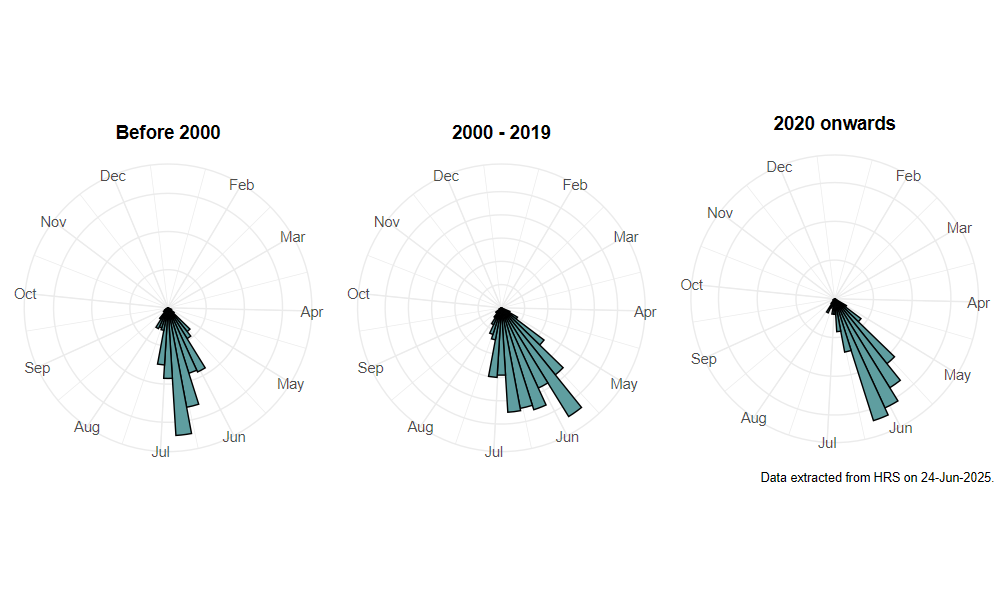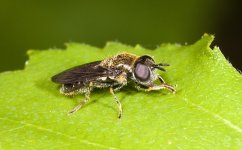Pipizella virens (Fabricius, 1805)
Identification
Identification difficulty = 3. ![]()
![]() according to Ball & Morris, 20241
according to Ball & Morris, 20241
Biology
On the continent, the larva is reported to be associated with aphids on the roots of white umbels. Found in taller and lusher vegetation than P. viduata, in situations like woodland and scrub edges, the fringes of wetlands, and cliff top and other coastal grassland. Adults stay close to the ground and will bask on sun-lit leaves, but are sometimes found visiting taller flowers including white umbels.
Flight period
The following plots show the number of unique records per week excluding those reported to be of immature stages.

Status
Was listed as 'Notable' by Falk, 19912, but dropped from this status by Ball & Morris, 20143 who consider it LOWER RISK.
Distribution
Much scarcer than P. viduata, this species is largely restricted to the lowlands of south-east England, although there are a few records from northern England, south-west England and Wales. Separation from P. viduata requires care and is best done by examination of the male terminalia which are figured by van der Goot (1981)4. Old records from more northerly locations must be questionable.

Trends
The following plots show the Frescalo TFactor vs year and a map of the rescaled frequency (all records) for the species.
-
Ball, S., & Morris, R. (2024). Hoverflies of Britain and Ireland. WILDGuides (3rd ed.). Oxford: Princeton University Press. ↩
-
Falk, S. (1991). A review of the scarce and threatened flies of Great Britain. ( No. 39). Research and Survey in Nature Conservation (pp. 1–194). Peterborough: NCC. ↩
-
Ball, S., & Morris, R. (2014). A review of the scarce and threatened flies of Great Britain. Part 6: Syrphidae. ( No. 9). Species status (pp. 1–130). Peterborough: JNCC. ↩
-
van der Goot, V. (1981). De zweefvliegen van Noordwest-Europa en Europees Rusland, in het bijzonder van de Benelux. Amsterdam: Koninklijke Nederlandse Natuurhistorische Vereniging. ↩
